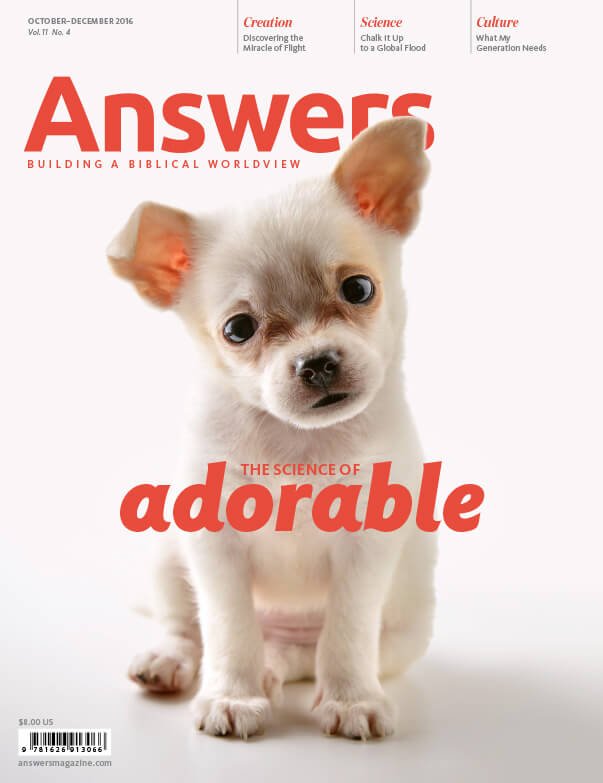
Is the Battle for Stem Cells Over?
Bible & Culture
We haven’t heard much about stem cells lately. Why?
The ethical use of human stem cells sparked an intense debate nearly 20 years ago. Since life and death were on the table, it’s no surprise that loud opinions and strong passions raged. The fires of controversy even reached the highest political office when, in 2001, pro-life President Bush restricted the use of federal funds for human embryonic stem cell research.
Since then, the controversy has cooled and almost subsided. But not for the reasons you might expect.
I’ve observed this debate closely, both as a lifelong pro-lifer and as a stem cell researcher, and I’ve been surprised at the trajectory this dispute has taken. Steadily but nearly imperceptibly, advocates of human embryonic stem cell research have effectively moved closer to the pro-life position. However, their shift has not been for reasons that pro-lifers could have predicted.
Advocates of stem cell research on human embryos have not conceded that life begins at conception. They have not admitted that adult stem cells have greater potential than the stem cells of preborn babies. In fact, they have not given in to any of the pro-life positions. Instead, the research of stem cells has followed a rather unexpected arc—with promising ramifications that may circumvent the moral impasse.
An Initial Chasm
When researchers first reported isolating human embryonic stem cells in 1998, it set in motion a whirl of global scientific activity and ethical wrangling. Because these cells ultimately develop into every cell type in the body, from pancreatic cells and brain cells to muscle and intestines, they allured researchers with the promise of cures for disease. Theoretically, these cells could replace diseased tissues and remove the scourges of cancer, heart disease, diabetes, Alzheimer’s, Parkinson’s, and many more diseases.
At the same time, the harvesting of these embryonic cells provoked the ire of the pro-life community. When these cells are derived outside the womb, human embryos must be killed. Hence, to save the lives of sick patients, the lives of other individuals would have to end.
Not surprisingly, a contentious battle soon ensued. The embryonic stem cell community and the pro-life community could not have been further apart.
A False Scientific Start
Initially, rather than just repudiate the destruction of human life, pro-lifers also vigorously advocated morally acceptable alternatives. For example, stem cells also exist in adults, and God designed these cells to regularly replenish adult tissue. In the bone marrow, stem cells exist to replenish the cells of the bloodstream, and skin stem cells replace the cells that are continuously shed from the surfaces of our bodies. Stem cells also exist in the gut to maintain the lining of our digestive tract.
For decades, clinicians have been attempting to harness the properties of adult stem cells for therapeutic ends. For example, bone marrow transplants—a form of stem cell transplant—have been used regularly without moral objection for a long time. Pro-lifers heartily endorsed the continuing use and expansion of this therapy, and hoped that common ground could be reached on this morally acceptable alternative.
Unfortunately, clinicians have historically viewed adult stem cells as less useful than embryonic stem cells. For example, adult bone marrow stem cells produce more blood cells, but they cannot produce pancreatic cells or neurons. In contrast, embryonic cells can produce all three. Hence, embryonic stem cells held much more potential than the adult stem cells.
Nevertheless, around the same time that researchers were exploring embryonic stem cells, a few scientific reports appeared that claimed an unprecedented and exciting potential for adult cells. For example, rather than just form blood, bone marrow cells appeared to have the capacity to form brain cells—and vice-versa. Pro-life advocates like me rejoiced at this fantastic finding, and hoped these new results would turn the tide in favor of protecting life without losing potential options for therapy.
Much to our disappointment, these initial results could not be confirmed. The luster of adult stem cells dimmed and they fell back to their original low place—limited in therapeutic potential and limited in their ability to unify the two camps of researchers toward a common goal. The divide seemed unbridgeable.
An Embryonic Scientific Wrinkle
On the other side of the divide, stem cell scientists who used embryonic stem cells faced a huge scientific conundrum. Treatments with these stem cells cause serious health problems. Since the cells are the leftovers of a unique (but destroyed) human life, the recipients’ immune system perceives them as “foreign,” and rejects them. The only way to avoid this problem is cloning—the very difficult process of creating in the lab a human embryo (another person) that is genetically identical to the person being treated.
The stem cell community faced a second scientific challenge. When human embryonic stem cells were tested in mice, they formed teratomas—weird tumors composed of a strange diversity of cell types, consistent with the embryonic origin of the injected cells. Presumably, human patients would suffer a similar result. Hence, these cells might cure patients of Alzheimer’s and then kill them with cancer.
With this catch-22 in mind, scientists began searching for ways around the two problems. One theoretical way to avoid tumor formation is to coax the embryonic cells to form new, adult-friendly cells before injecting them. In other words, perhaps brain cells (and other types) could be produced in the culture dish, and then injected into patients.
The problem is that a few embryonic cells might remain in the mix and still produce cancer. Just one leftover stem cell that failed to form a brain cell might be lethal. Another path had to be discovered.
Bringing the Scientific and Ethical Worlds Together
In theory, if one type of adult stem cell could be converted into another type of adult stem cell, the process would avoid tumors. Furthermore, if these adult stem cells were obtained from the same patient, the immune rejection problem would be circumvented as well. This approach has an added benefit on the moral and ethical side of the equation—human life is neither created nor destroyed.
In August 2006, a pair of Japanese investigators reported the conversion of adult cells back to an embryonic-like state—a finding which, in 2012, gained Nobel Prize honors for the lead investigator, Shinya Yamanaka. Unfortunately, this discovery still did not solve the tumor problem, and it raised disturbing new ethical questions. (For instance, did the process create—and then murder—another human life?) On the scientific side, it demonstrated that some coaxing methods were feasible. If nothing else, it raised the possibility that converting adult stem cells would eventually be a reality.
Since 2006, many technical reports have been published that take incremental steps toward converting adult stem cells. Some of this progress has been technical. For instance, researchers initially developed methods to convert cells back to an embryonic state through genetic manipulation. This technique alters the DNA of the recipient’s cells, raising additional safety concerns for clinical use. In 2013, investigators reported that they had produced stem cells strictly with chemicals and without modifying the DNA sequence.
In addition, several labs have claimed to convert adult cells back, not to an embryonic state, but to an intermediate/partially adult state. It’s likely just a matter of time before researchers are able to convert adult cells from one cell type to another without needing to alter the DNA and without the fear of tumors. When this happens, pro-life ethicists and stem cell scientists will suddenly find themselves on the same side of the debate aisle.
To be sure, most scientists continue to have few, if any, reservations about research on embryonic cells. Developmental biologists still want to answer many fascinating scientific questions on human development, and most of them don’t want ethical concerns to restrict their research goals.
Nevertheless, on the issue of stem cells for therapy at least, the pro-life community is a short distance from winning a major victory. The use of stem cells to help patients is about to enter a strictly pro-life, adult-cell phase—without any concessions from the pro-life community.
This sort of cease-fire would be extraordinary.
100% Human from the Start
In the debate over stem cells, it’s easy to get lost in the abundance of technical terms and nuanced details. Here’s a concise summary of the key biblical and scientific concepts on this thorny question.
Biblical Ethics
- Scripture teaches that life begins at fertilization. In Psalm 51:5 David referred
to himself as a person in need of salvation from the moment of fertilization
(“
in sin did my mother conceive me
”). - In modern technical terms, fertilization takes place when sperm and egg join into one new cell. So we are 100% human from this moment, long before this cell begins to divide and produce stem cells.
- Embryonic stem cell research destroys embryos after fertilization to extract stem cells—so it violates God’s Sixth Commandment against killing.
Scientific Facts
- The moment of fertilization combines two separate genetic entities into one cell, forming a genetic whole.
- The human embryo does not pass through various nonhuman stages before it becomes human. Rather, from the moment of fertilization, a 100% human being begins the process of taking on a more mature physical form.
- Adult stem cells are harvested from select tissues of living adults. As simple as a bone marrow biopsy, procuring adult stem cells does not destroy human life in the manner that procuring embryonic stem cells does.
- Scientists are attempting to artificially convert one type of adult stem cell into another. If this succeeds, adult stem cells will far surpass embryonic stem cells in their clinical utility.
Answers Magazine
October–December 2016
Your irresistible urge to snatch up that cute little puppy and hug it for all youʼre worth isnʼt just a feeling. Itʼs science.
Browse Issue SubscribeRecommended Resources

Answers in Genesis is an apologetics ministry, dedicated to helping Christians defend their faith and proclaim the good news of Jesus Christ.
- Customer Service 800.778.3390
- © 2024 Answers in Genesis





